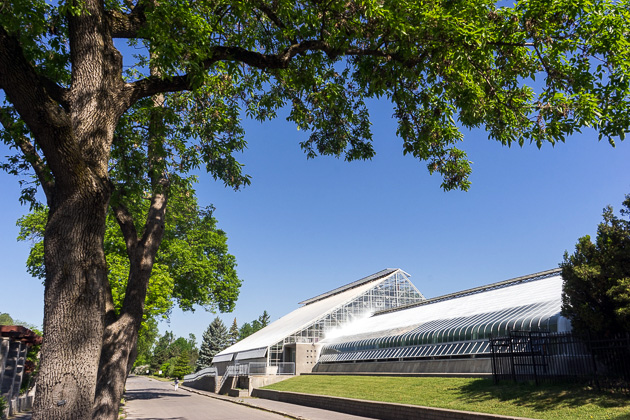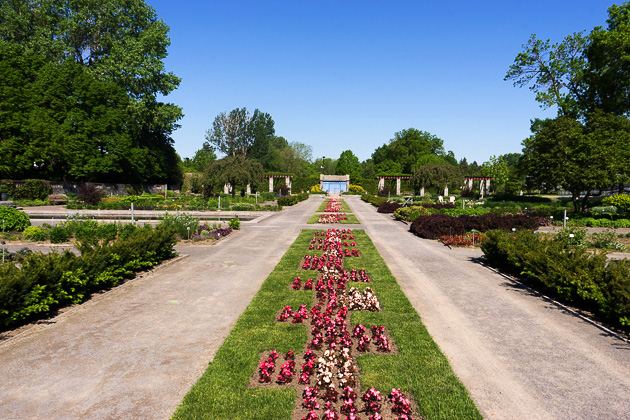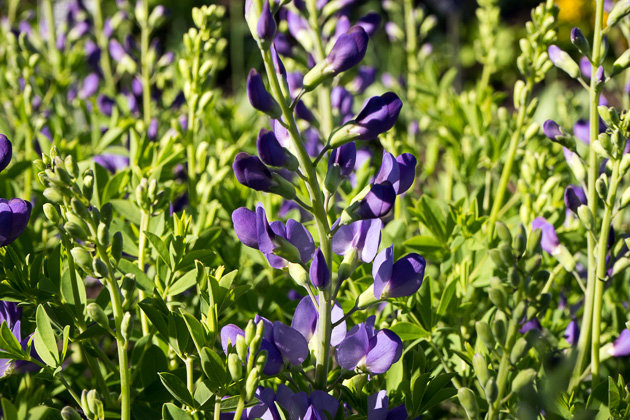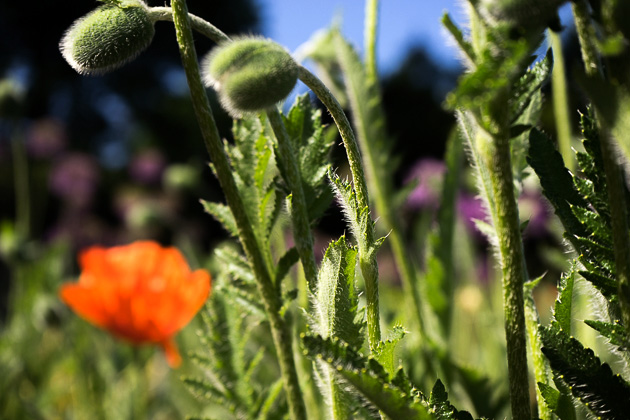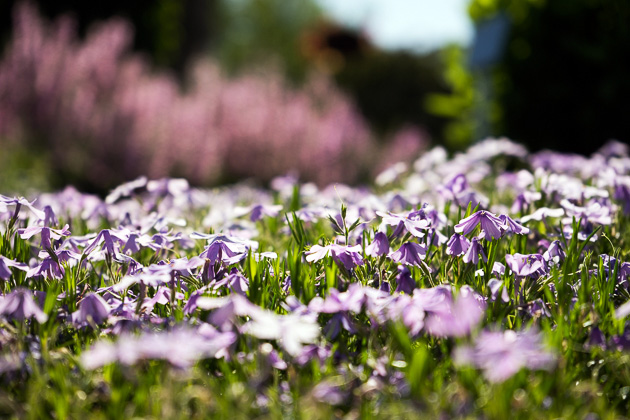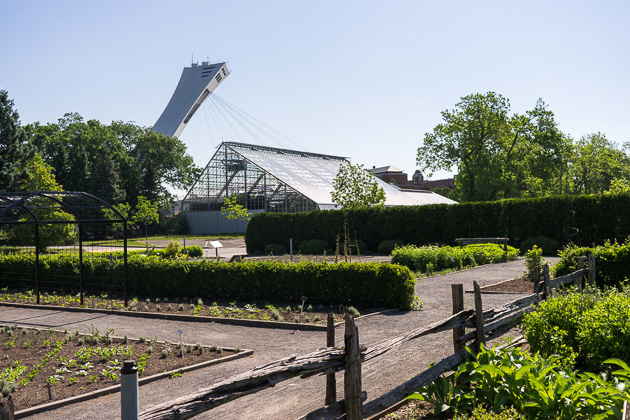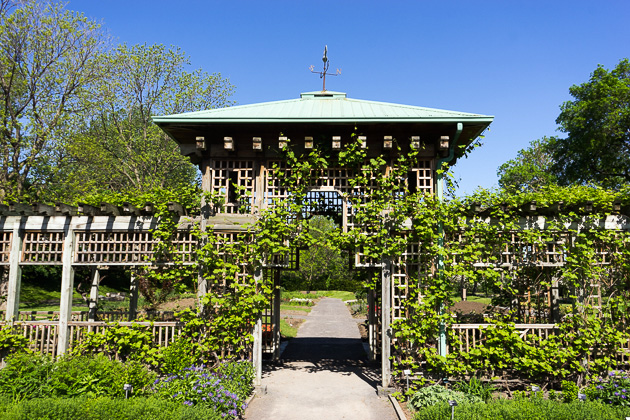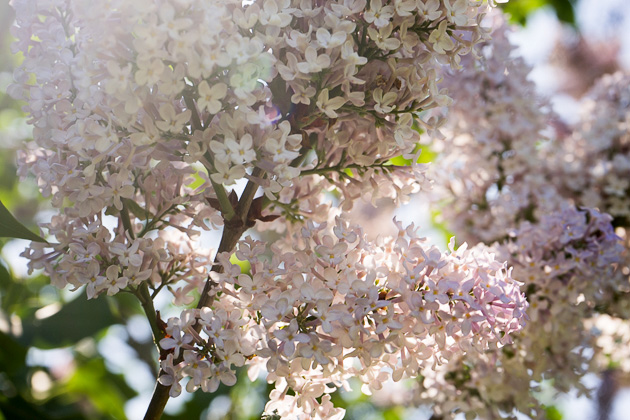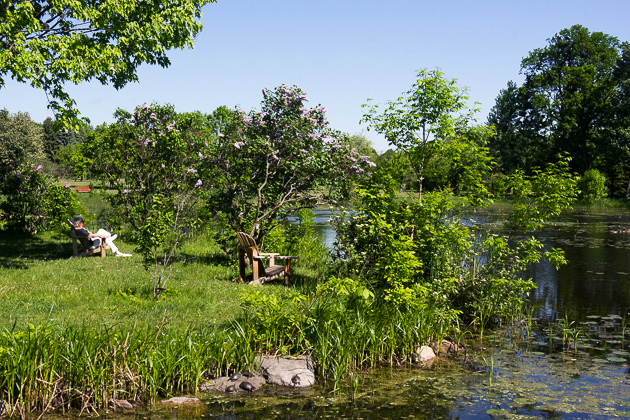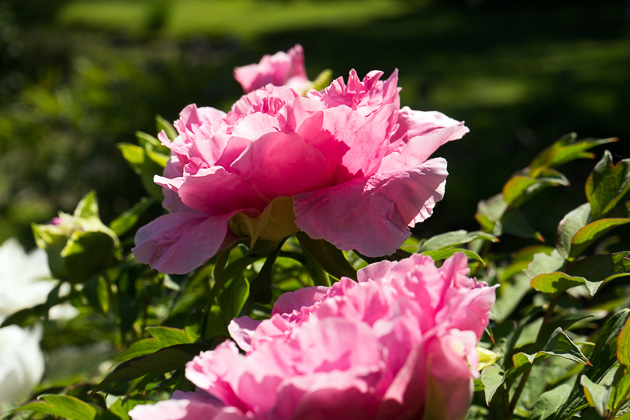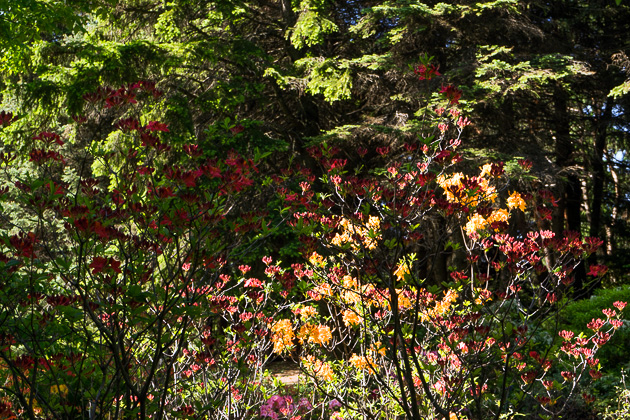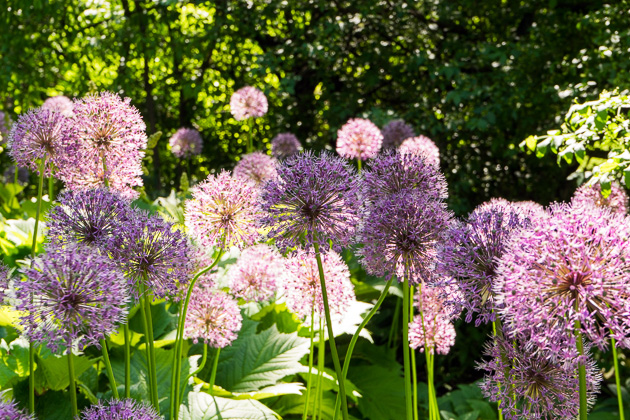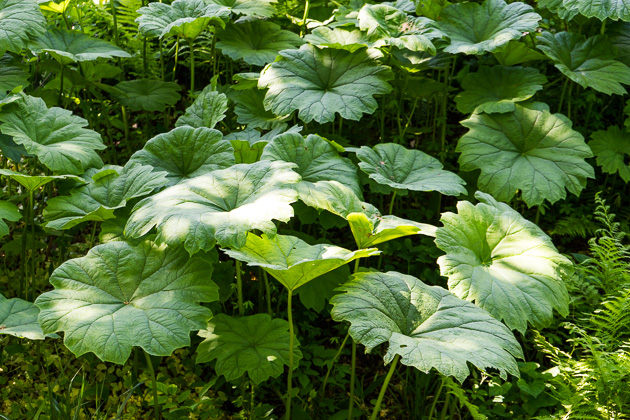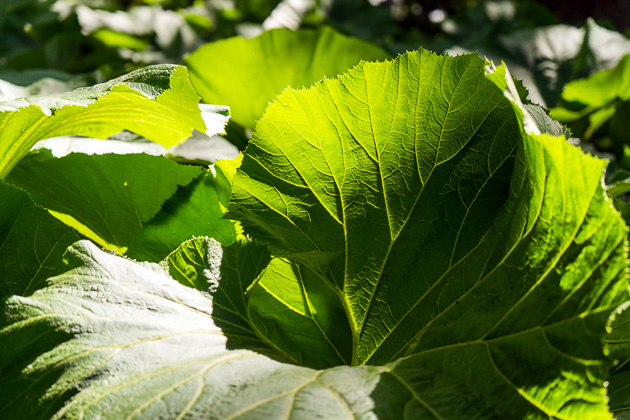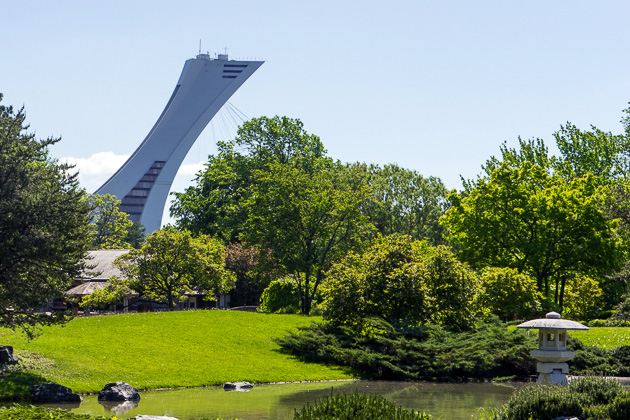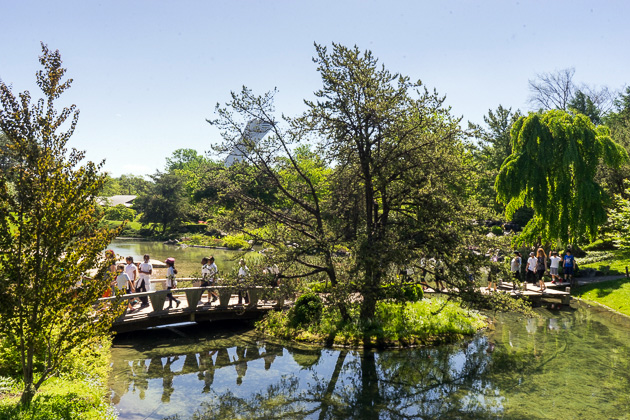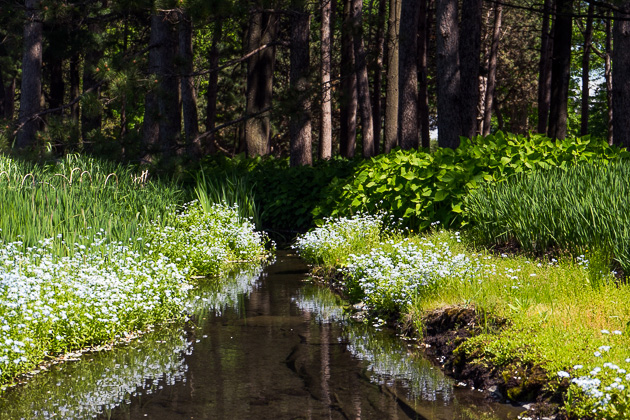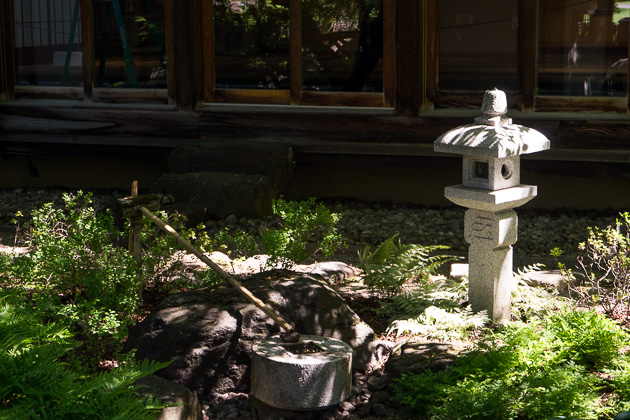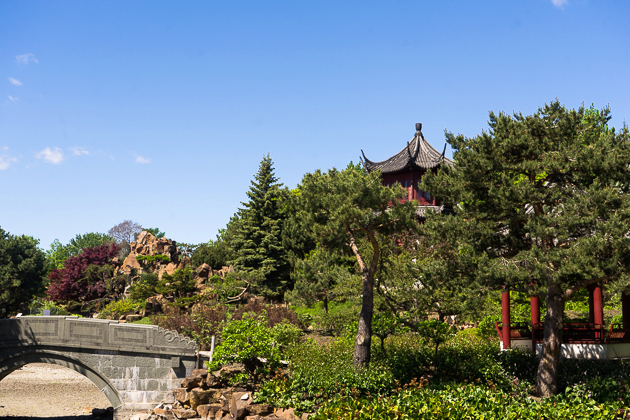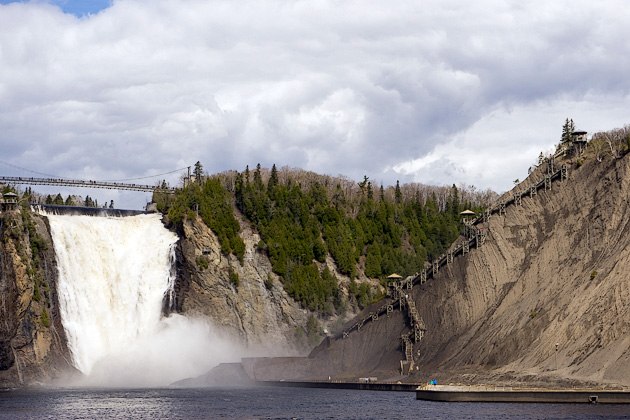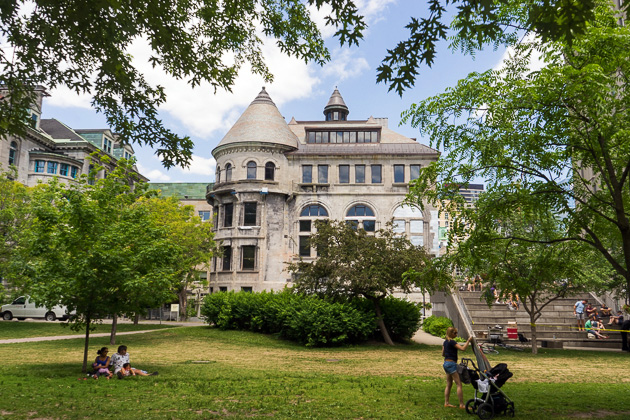The Montreal Botanical Garden
Comprising an area of almost 200 acres next to the Olympic Park, Montreal’s Botanical Garden opened in 1931, and is considered to be among the most important in the world. The garden is separated into over twenty thematic zones along with ten greenhouses, dozens of kilometers of trails, and over 22,000 plant species. In other words, you better get started.
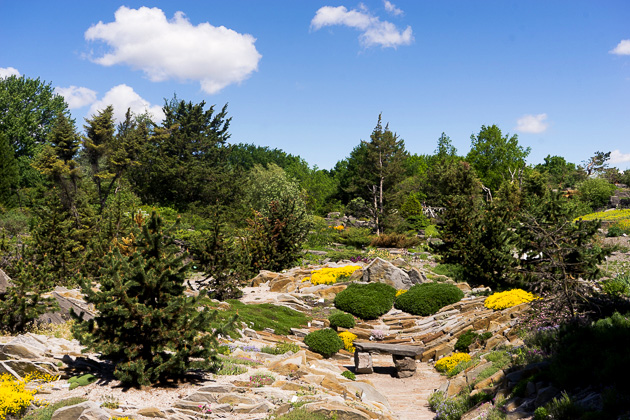
There’s no way you could see everything in the Botanic Garden during a single visit. So perhaps the best course of action is to ask one of the staff what happens to be in bloom. That’s what we did, and the guy at the welcome desk pulled out a map, circled “Lilacs” and “Rhododendrons” and recommended a route that would take us to a few of the park’s other highlights.
We had visited the Botanical Garden’s greenhouses shortly after our arrival in Montreal, to see the annual “Butterflies Go Free” exhibition, so today we were able to concentrate on the outdoor sections. That was useful, because the greenhouses themselves are worth hours of your time.
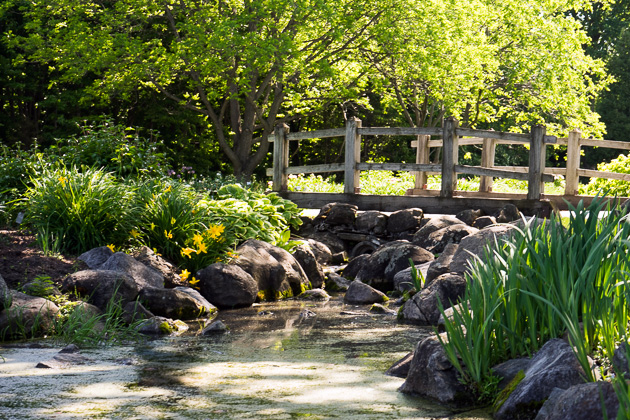
Starting on the western edge of the park, we walked through three small zones: the Perennials, Economic Plants (such as those that produce dye) and the Garden of Innovations (where new hybrid flowers and the latest gardening trends are showcased). We then arrived at the field of lilacs which, as the employee had promised, were in fragrant bloom. The weather was perfect, and I could have spent all day under the shade of the trees with a book; in fact, a lot of visitors were doing exactly that. It doesn’t make sense for tourists, but for a reasonable price, residents can become “Friends of the Garden,” which gives them free access for a year.
We continued north, through the First Nations Garden (featuring trees of North America and a few totem poles), and with some trouble found the Leslie Hancock Garden. This is a small, shaded plot filled with heather and rhododendrons, which feels as though it’s been purposefully hidden away in the forest.
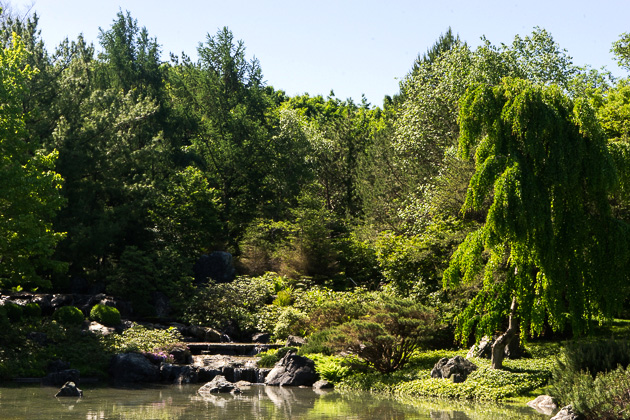
Heading back towards the greenhouse, we passed through the Shade Garden, where low-light plants like ferns and Quebec trilliums thrive, and moved on to the Japanese Garden. They’ve done a good job replicating the atmosphere and layout of the gardens we had become so fond of while in Tokyo. Montreal’s Japanese Garden is the work of horticulturalist Ken Nakajima, and includes a zen stone garden, a bonsai collection, and even a traditional pavilion where you can participate in a tea ceremony.
Next to the Japanese Garden is the Chinese Garden, which is supposed to be fantastic. Unfortunately, it was closed for renovation during our visit (it’s set to reopen in 2017) so we wandered through the Alpine Garden. This zone isn’t as immediately beautiful as the others, but shows off a completely different kind of landscape, with the rocks and flowering shrubs of the Alps.
The Botanic Garden isn’t cheap, and it’s so large that I can only recommend going when you have a lot time to spend there. Keep in mind that your ticket will also get you into the neighboring Insectarium. We loved the garden, and even after spending the whole morning there, I wasn’t nearly ready to leave.
Montreal Botanical Garden – Website
